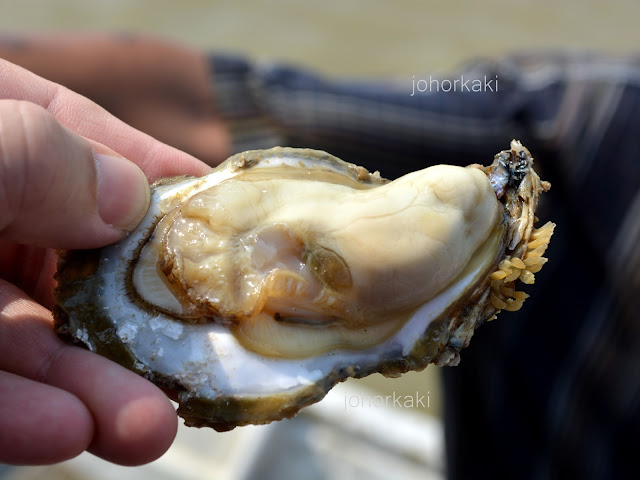
The first time I heard about Muar oysters was from the lady boss of Ah Hua kway teow thng at Jalan Segget in old downtown Johor Bahru.

Ah Hua at Jalan Segget is famous for their RM16 fully loaded kway teow thng. The lady boss proudly told me that "I use only Muar oysters. More expensive but the best."
A quick search of the Singapore National Library archives revealed that Muar oysters were already a well known, much sought after delicacy even during the early 1900s.
You can imagine how excited I was to have a chance to see oyster divers in action in the Muar river during the Muar Food Trail by Tourism Malaysia Johor.

We boarded a ferry at the Tanjung Emas jetty to link up with the divers' sampans at the Muar river mouth.
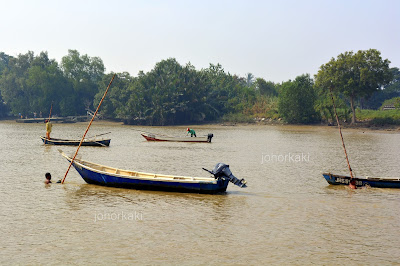
The divers start work each day when the tide is low. Coming out in groups in motorised sampans.
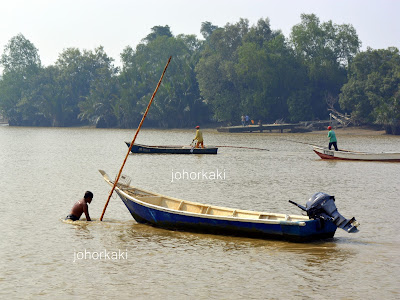
The diver heaved himself high above the water to take a long, deep breath. The divers dive just by holding their breath under water - no breathing apparatus is used.
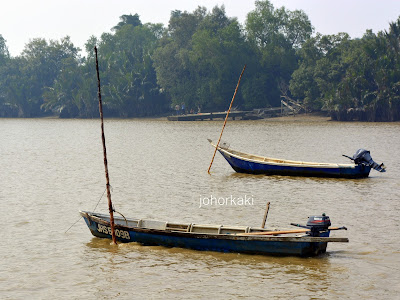
The divers then disappeared under the water. The only things still visible were the sampans and the long wooden poles. As the current was swift in the Muar river, the boats continued to drift at a fast clip towards the sea while the divers were looking for oysters. The divers used the long poles to guide them down and up the oyster bed.
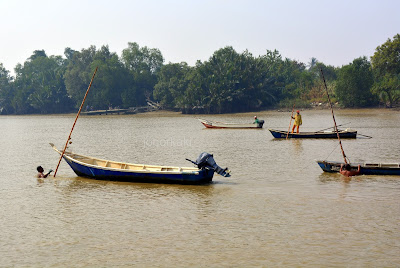

A few minutes later, the diver surfaced and threw the oysters into the sampan.

A middle man with a freshly caught oyster. At the time of writing, the divers sold the oysters to the middle man at RM20 per kilo. This seems like quite a fair price for the divers' hard work, considering how heavy oyster shells are.

The Muar oyster that I ate straight from the Muar river bed. The slippery oyster was soft, fat, juicy, savoury and creamy.

The first time I heard about Muar oysters was from the lady boss of Ah Hua kway teow thng at Jalan Segget in old downtown Johor Bahru.

Ah Hua at Jalan Segget is famous for their RM16 fully loaded kway teow thng. The lady boss proudly told me that "I use only Muar oysters. More expensive but the best."
A quick search of the Singapore National Library archives revealed that Muar oysters were already a well known, much sought after delicacy even during the early 1900s.
You can imagine how excited I was to have a chance to see oyster divers in action in the Muar river during the Muar Food Trail by Tourism Malaysia Johor.

We boarded a ferry at the Tanjung Emas jetty to link up with the divers' sampans at the Muar river mouth.

The divers start work each day when the tide is low. Coming out in groups in motorised sampans.

The diver heaved himself high above the water to take a long, deep breath. The divers dive just by holding their breath under water - no breathing apparatus is used.

The divers then disappeared under the water. The only things still visible were the sampans and the long wooden poles. As the current was swift in the Muar river, the boats continued to drift at a fast clip towards the sea while the divers were looking for oysters. The divers used the long poles to guide them down and up the oyster bed.


A few minutes later, the diver surfaced and threw the oysters into the sampan.

A middle man with a freshly caught oyster. At the time of writing, the divers sold the oysters to the middle man at RM20 per kilo. This seems like quite a fair price for the divers' hard work, considering how heavy oyster shells are.

The Muar oyster that I ate straight from the Muar river bed. The slippery oyster was soft, fat, juicy, savoury and creamy.
No comments:
Post a Comment